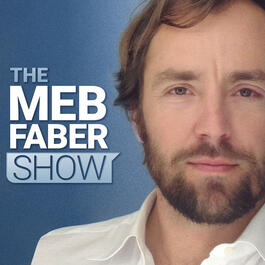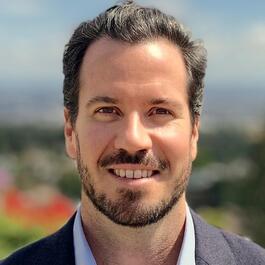
Tobias Carlisle - “In Order to Find Something Genuinely Undervalued...There's Always Something that You Don't Like" | #77
In Episode 77, we welcome author and asset manager, Tobias “Toby” Carlisle. After discussing Toby’s background, including his time as an M&A lawyer and what drew him to investing, we jump into his latest book, The Acquirer’s Multiple. Toby tells us that the book describes a simple way to find undervalued companies. In essence, you’re trying to find a company trading below its intrinsic value. This is how to get a great price as a value investor. Of course, you get these prices because things don’t look too rosy with the stock – there’s usually a crisis or some hair on it, so to speak. Toby tells us “In order to find something that is genuinely undervalued…there’s always something that you don’t like.” This leads into a great conversation about what Warren Buffett seeks in a company, versus what Toby, through the Acquirer’s Multiple, seeks. While Buffett looks for wonderful companies trading at fair prices, Toby seeks fair companies trading at wonderful prices. Toby goes on to tell us that for a company, there are two sources of value – the assets it owns, and the business/operations itself. You have to look at both together. Buffett looks at wonderful companies at fair prices, and is willing to pay a premium to book value, but that’s generally because Buffett is able to ascertain that the stock is worth even more. Joel Greenblatt took this idea and ran with it in his book, The Little Book That Beats the Market. The idea relies on buying companies with high returns on investing capital (ROIC). But Toby thought “what if you can buy at the bottom of a business cycle?” You could likely get better returns by buying very, very cheap, hence his focus on fair companies at wonderful prices. The guys then discuss the merits of a high ROIC. Toby tells us that a high ROIC is meaningless absent a moat or competitive advantage. Don’t misunderstand – a high ROIC is incredibly valuable, but it has to be protected. Finally, we get to The Acquirer’s Multiple. Toby tell us you’re trying to find the real earnings of the business. The guys touch on lots of things here – why Buffett & Munger actually don’t prefer this multiple… a comparison between The Acquirer’s Multiple (AM) and Greenblatt’s Magic Formula… and an example from Toby about the power of the AM using the stock, Gilead. The guys eventually switch gears, and turn toward Toby’s private “special situations” fund. In essence, Toby looks for situations when there’s a corporate act, say, a board-level decision to buy or sell a company, or pay a special dividend, or buy back a material amount of stock. He then tries to arb it. He gives us any example of how he made money using the strategy back when Obama was attempted to stop corporate reverse-mergers. But in all cases, Toby is still looking for undervalued, cheap investments. There’s tons more in this episode: the “broken leg” behavioral problem… how investors trying to improve upon the Magic Formula tend to vastly underperform the Magic Formula left alone… how professional investors tend to behave just as poorly as non-professionals… what Toby is working on/excited about right now… and of course, Toby’s most memorable trade. It involves a basket of net-cash biotechs. While he made over 200%, if he hadn’t tinkered, he could have made 750%. What are the details? Find out in Episode 77. Learn more about your ad choices. Visit megaphone.fm/adchoices
From "The Meb Faber Show - Better Investing"




Comments
Add comment Feedback